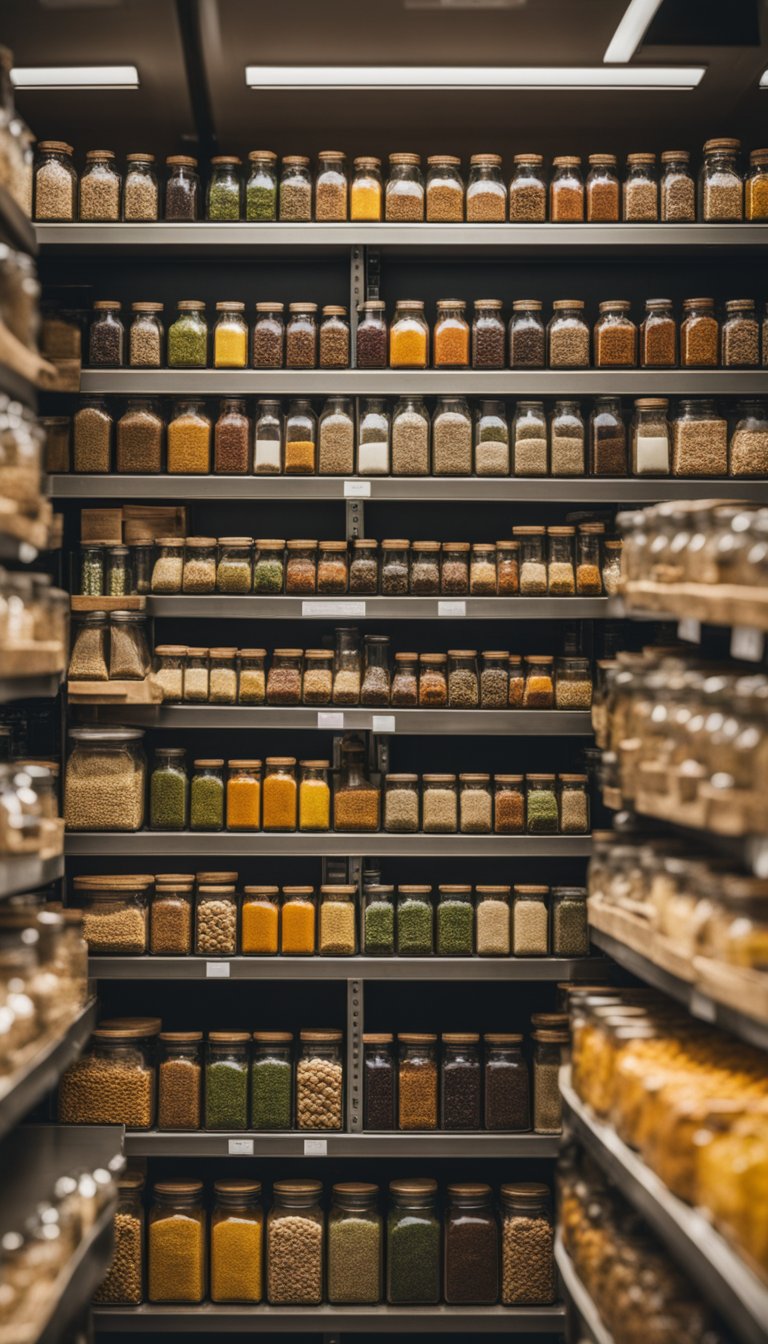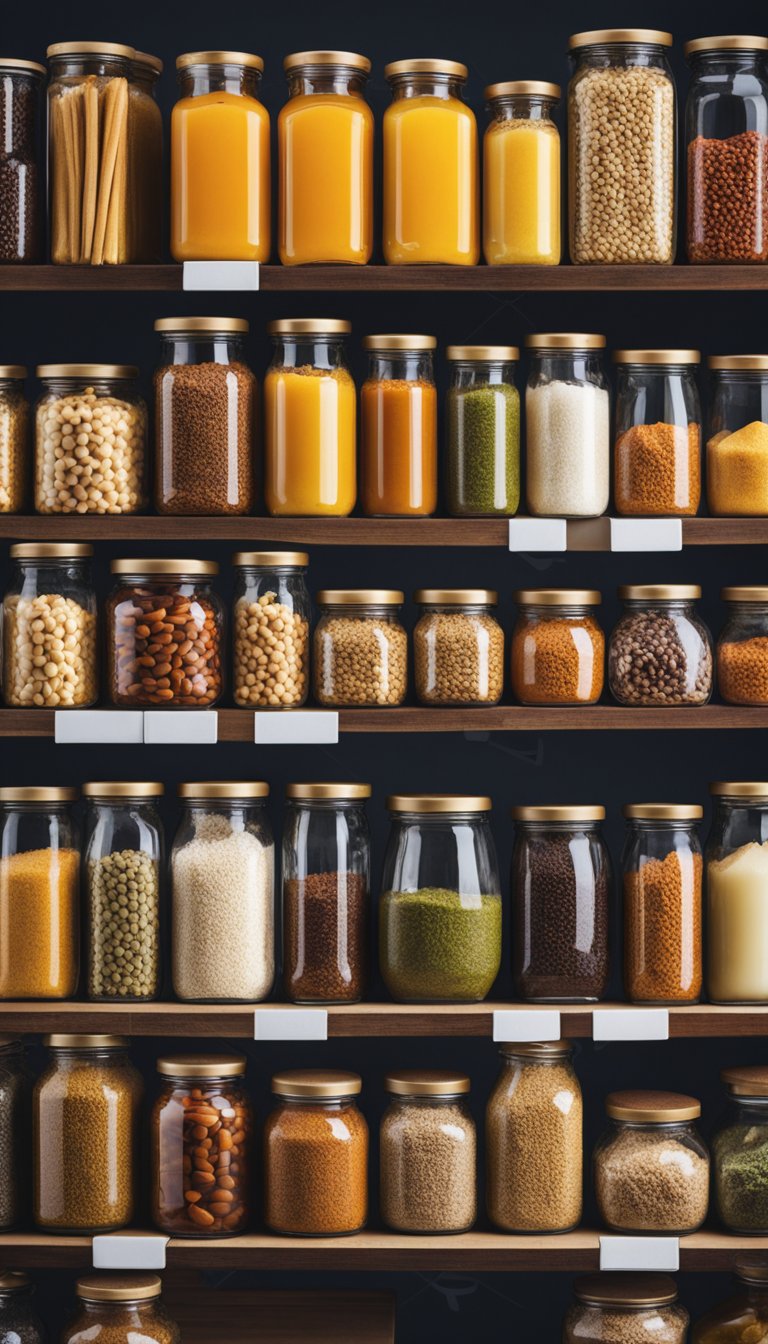The culinary world is a vast, rich tapestry woven with flavors, aromas, and textures from every corner of the globe. Venturing into the world aisle of your supermarket is like embarking on a gastronomic adventure without leaving your neighborhood. Stocking your pantry with unique ingredients from various international cuisines not only broadens your culinary repertoire but also allows you to savor and appreciate the essence of different cultures. Whether it’s the umami depth of Japanese soy sauce, the citrusy kick of yuzu kosho, or the heart-healthy benefits of a variety of cooking oils, these pantry staples are the building blocks for authentic global dishes.

Exploring the variety of spices, seasonings, sauces, and condiments can elevate your cooking by introducing new flavor profiles. Ingredients such as sumac lend acidic brightness to dishes, while a dab of yuzu kosho can add the perfect amount of heat and tang. Versatile vegetables and legumes, sweeteners, and baking essentials further expand the possibilities, allowing for the crafting of both traditional dishes and innovative culinary creations. With each addition to your pantry, you’re not just stocking up on groceries; you’re assembling a toolkit that enables endless creativity in the kitchen.
Key Takeaways
- Stocking unique international ingredients enhances both flavor and cultural appreciation.
- A diverse array of seasonings, sauces, and oils contribute to a well-rounded global pantry.
- Incorporating a variety of pantry items supports creative and authentic culinary endeavors.
Building a Global Pantry: Essential Categories

A well-stocked global pantry encompasses a variety of staple ingredients that allow you to prepare diverse international dishes. Key components include a range of grains and proteins that are foundational to many world cuisines.
Pantry Staples for Diverse Cuisines
In creating an international pantry, your focus should be on stocking versatile ingredients that can be used across various recipes. Begin by securing a collection of rice varieties, such as long-grain basmati, which is perfect for fluffy pilafs, and sticky rice, used in many Asian dishes. Beans and lentils are essential for hearty stews and can serve as the basis for vegetarian dishes globally.
- Rice: Basmati, Jasmine, Arborio, Sticky
- Beans: Black beans, chickpeas, cannellini beans
- Lentils: Red lentils, brown lentils, green lentils, Puy lentils
- Quinoa: White, red, black
These items not only offer a canvas for a multitude of flavors but also boast long shelf lives, making them ideal to have on hand.
The Role of Grains and Proteins
The grains and proteins in your pantry are the building blocks for nutritious meals, providing essential energy and sustenance. Grains like quinoa, with its complete protein profile, are particularly valuable for their nutritional benefits and adaptability. Grains can serve as sides, in salads, or as the main component of a dish. As for proteins, consider varying both animal and plant-based sources, ensuring that you have the materials needed for any recipe.
Table of Important Grains and Proteins:
| Grain/Protein | Characteristics | Culinary Uses |
|---|---|---|
| Quinoa | Gluten-free, complete protein | Salads, stews, side dishes |
| Brown Rice | Whole grain, rich in fiber | Stir-fries, rice bowls |
| Lentils | High in protein, fiber, and iron | Soups, stews, salads |
| Chickpeas | Versatile, protein-rich | Hummus, curries, salads |
By incorporating these essential categories into your pantry, you can explore a wide range of world cuisines while ensuring balanced, wholesome meals.
The Flavor Enhancers: Spices and Seasonings
As you journey through global cuisines, the spices and seasonings you choose can transform simple ingredients into cultural delicacies. Before diving into specific regions, it’s essential to understand that each spice and blend has its own unique properties and uses.
From East Asia to the Middle East: A Spice Tour
East Asia:
- Szechuan Pepper: Creates a tingling numbness and is a staple in Chinese cuisine.
- Five Spice Powder: A blend including star anise and cloves, it delivers an intricate balance of flavors.
Middle East:
- Cumin: This earthy spice is versatile and can be found in many blends and dishes, from curries to hummus.
- Sumac: Offers a tart, lemony flavor, perfect for sprinkling over salads or grilled meats.
- Za’atar: A blend containing thyme, oregano, and marjoram, often mixed with toasted sesame seeds and sumac.
Table 1: Basic Pairings
| Spice/Seasoning | Common Pairing |
|---|---|
| Szechuan Pepper | Meat Dishes |
| Five Spice Powder | Duck & Pork |
| Cumin | Legumes & Stews |
| Sumac | Fattoush Salad |
| Za’atar | Flatbreads & Dips |
Sweet, Tangy, and Savory Additions
For a sweet note, saffron imparts a distinct, luxurious flavor and a golden hue, ideal for rice dishes like paella.
On the tangy side, sumac is a go-to, especially for Mediterranean recipes. It can brighten up any dish that benefits from a hint of lemon.
And for a savory depth, consider berbere, an Ethiopian spice blend that typically contains chili peppers, garlic, fenugreek, and several other spices. It gives a warm, peppery kick to stews and meat dishes.
Bullet List of Flavor Profiles:
- Saffron: Sweet, floral, and earthy notes.
- Sumac: Tangy, lemony, and slightly sour.
- Berbere: Pungent, spicy, and warm with a hint of smokiness.
Experiment with these spices to discover a world of flavor. Remember, a small amount can make a significant impact, so start with less and adjust according to your taste.
Specialty Sauces and Condiments
Your culinary creations can reach new heights of flavor by incorporating a variety of specialty sauces and condiments into your pantry. These powerhouse ingredients not only add a burst of taste but also bring cultural authenticity to your meals.
Creating a Harmony of Sauces
When you’re looking to build a base for flavor, soy sauce and fish sauce are indispensable in your pantry. Soy sauce, originating from China, is a versatile player, offering a balance of saltiness and a slight sweetness, often due to the natural fermentation of soybeans, wheat, and a brewing process that can take months or even years. On the other hand, fish sauce, a staple in Southeast Asian cuisines, particularly Thai and Vietnamese, provides a unique umami punch. Its robust, savory depth is a result of fermented fish and salt, an ancient practice that has seasoned dishes for centuries.
- Soy Sauce: Ideal for marinades, stir-fries, and as a dipping sauce.
- Fish Sauce: Best used in small quantities to dress salads, season soups, and sauces.
Condiments that Transform Dishes
A dash of Sriracha sauce, with its moderate heat and hint of garlic, can revitalize any dish. Hailing from Thailand, it’s become a global favorite. Similarly, maple syrup isn’t just for pancakes — it’s a natural sweetener with a complex flavor profile that can enhance sweet and savory dishes alike. Originating from the sap of sugar maple trees, it’s a North American delicacy.
For a rich, nutty element, tahini, a paste made from ground sesame seeds, is your go-to, especially in Middle Eastern recipes. Molasses, with its deep, bittersweet flavor, offers substance to marinades and baked goods. Don’t forget about honey, a natural sweetener produced by bees, which varies in taste depending on the flowers used during pollination, which can bring a delicate sweetness to a variety of dishes.
- Sriracha Sauce: A kick for soups, sandwiches, and noodle dishes.
- Maple Syrup: Adds complexity to dressings, glazes, and even coffee.
- Tahini: Essential for homemade hummus or as a creamy dressing.
- Molasses: Used for richer flavor in baking and barbeque sauces.
- Honey: Perfect as a glaze for meats or to sweeten sauces and dressings.
Versatile Vegetables and Legumes
Incorporating a diverse range of vegetables and legumes into your pantry can significantly enhance your culinary creations with both flavor and nutrition.
A Rainbow of Plant-Based Options
Starting with vegetables, it’s essential to stock a variety that offers both culinary flexibility and health benefits. Cauliflower stands out as a chameleon in the kitchen, easily transformed into rice alternatives, pizza crusts, or hearty steaks. Don’t overlook the vibrant hues and flavors of other vegetables, such as tomatoes and onions. Fresh tomatoes, or even canned tomatoes, are indispensable for their ability to add depth to sauces and stews. Meanwhile, onions provide a flavor foundation for an array of global dishes. Additionally, capers can introduce a salty zest to your meals that can elevate a simple pasta dish or a Mediterranean-inspired salad.
- Essential Vegetables for Your Pantry:
- Tomatoes: canned and fresh for sauces and salads.
- Onions: a base for soups, stews, and stir-fries.
- Cauliflower: versatile enough for low-carb substitutions.
- Capers: perfect for adding a piquant flavor to dishes.
Legumes as Pantry Cornerstones
When it comes to legumes, they should be considered a staple in your pantry due to their versatility and nutritional content. Black beans and chickpeas, for instance, can be the main event in tacos or hummus, yet also play a supportive role in salads and soups. They’re high in protein, making them an excellent choice for plant-based diets. With a long shelf life, especially in their dried or canned forms, legumes are a convenient and cost-effective ingredient that you can turn to time and time again.
- Key Legumes to Keep on Hand:
- Black Beans: for a protein-rich addition to any meal.
- Chickpeas: to create creamy hummus or as a salad topper.
- Lentils: quick-cooking and nutritious for soups and stews.
By embracing the wide array of versatile vegetables and legumes available, you’ll not only add color and diversity to your meals but also reap the nutritional and flavorful benefits these ingredients offer. Keep your pantry stocked with these essentials, and you’ll be prepared to craft delicious, plant-based meals on a whim.
Sweeteners and Baking Essentials
When delving into the world of baking, the right selection of sweeteners and baking essentials is pivotal to the outcome of your creations. You’ll need to stock up on a variety of sugars and understand the fundamental flours and leavening agents to ensure success in every recipe.
Natural Sweetness and Rich Flavor
Sugars:
- Granulated Sugar: Your go-to sweetener for most recipes, providing a clear, pure sweetness.
- Brown Sugar: Brings a deep molasses flavor to cookies and cakes; essential for that extra moist texture.
- Molasses: This viscous by-product of refining sugar cane or sugar beets into sugar imparts a rich, caramel-like flavor.
- Honey: A natural sweetener that varies in taste depending on the source of the nectar; it can add more complexity than plain sugar.
- Sweetened Condensed Milk: Adds creamy sweetness to desserts and is a key ingredient in many candy and fudge recipes.
Remember to adjust your liquid content when substituting honey or molasses for sugar, as they can alter the moisture balance of your baked goods.
Flours and Leavening Agents
Flours:
- All-Purpose Flour: Your primary, versatile flour for breads, cakes, cookies, and more.
- Specialty Flours: Such as whole wheat, almond, or coconut flour for unique textures and dietary needs.
It’s important to note that different flours offer various protein content, which will affect the structure and chewiness of your baked goods.
Leavening Agents:
- Baking Soda: A base that reacts with acidic components to create lift; ideal for recipes with a natural acidic ingredient.
- Baking Powder: Contains both an acid and a base, allowing it to react and create lift without additional acidic ingredients.
- Yeast: A living microorganism that produces gas through fermentation; essential for bread-making.
Your pantry should accommodate both fast-acting and traditional active dry yeast to suit different baking requirements.
Frequently Asked Questions
Incorporating unique ingredients into your pantry can transform ordinary meals into global culinary adventures. Explore these FAQs to elevate your cooking with international flair.
Which unique spices should I consider adding to my pantry for global cuisine?
For a diverse spice collection, consider curry powder, anise, coriander, and paprika. These spices will allow you to create a range of dishes from various cuisines, adding depth and flavor to your meals.
What are some essential ingredients for authentic Asian cooking?
Stock up on spices such as star anise, Sichuan peppercorns, and turmeric. Ingredients like soy sauce, rice vinegar, sesame oil, and mirin are also fundamental to achieve the balance of flavors that Asian cuisine is known for.
Can you list unusual baking ingredients that could inspire new recipes?
Experiment with baking by using ingredients like matcha powder for a unique, earthy flavor or black sesame seeds for a nutty, rich taste. Incorporating these can inspire creative baked goods that stand out.
What staple items are recommended for a well-rounded Mediterranean pantry?
A well-stocked Mediterranean pantry includes extra virgin olive oil, balsamic vinegar, olives, capers, and a variety of dried herbs like oregano and thyme. These staples are versatile and can be used in numerous Mediterranean dishes.
How can I incorporate international flavors into everyday meals with pantry staples?
Use spices like cumin or cardamom to add a Middle Eastern touch to your dishes or chipotle peppers for a smoky, Mexican twist. Easily integrate heart of palm into salads for a tropical note, and tahini for a rich, creamy texture in sauces and dressings.
What are the must-have pantry items for someone who loves to experiment with international recipes?
Essentials include various types of rice, like jasmine or basmati, dried pulses, specialty flours such as chickpea or rice flour, and canned goods like coconut milk and tomatoes. These items are versatile and can serve as the foundation for many international recipes.
